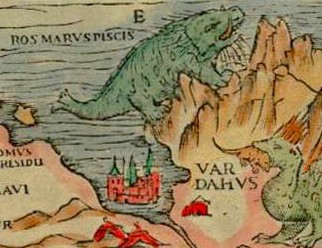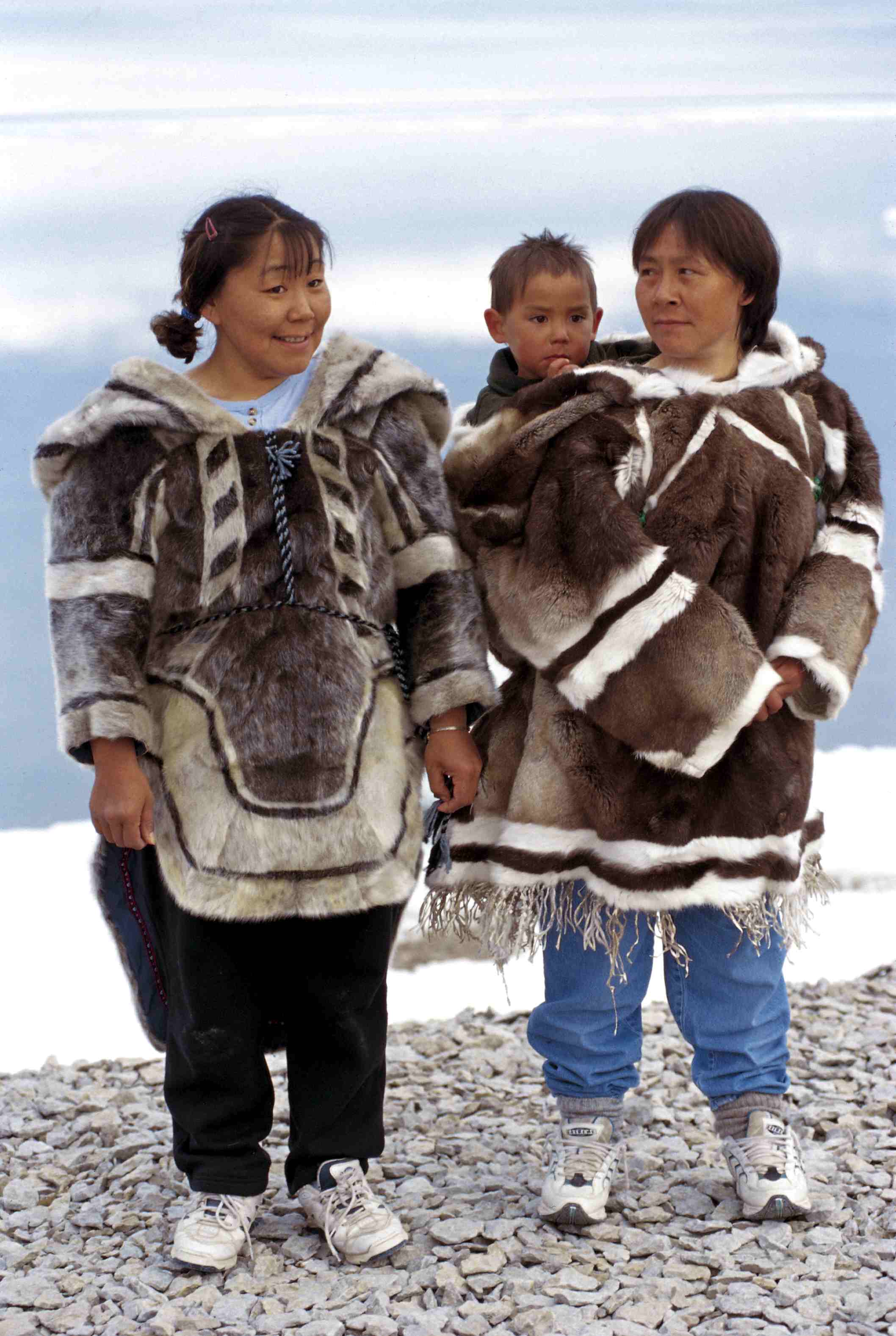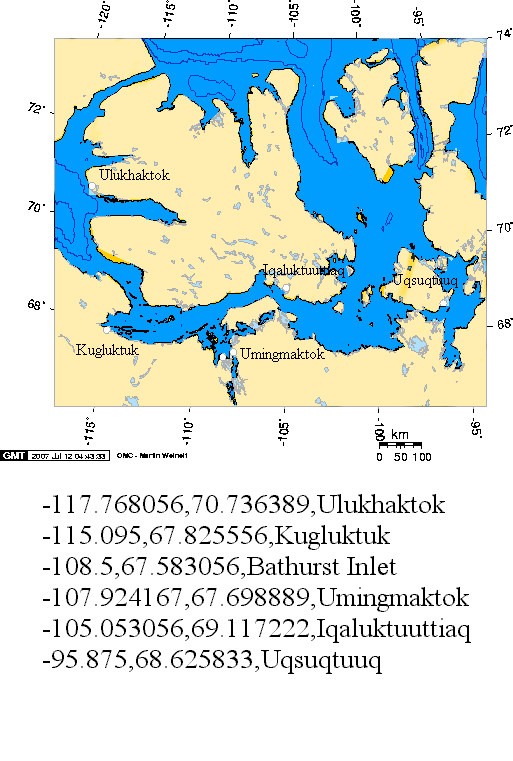|
Sedna (mythology)
Sedna (, previously ''Sedna'' or ''Sidne'') is the goddess of the sea and marine animals in Inuit religion, also known as the Mother of the Sea or Mistress of the Sea. The story of Sedna, which is a creation myth, describes how she came to rule over Adlivun, the Inuit equivalent of the underworld. In sculptures, Sedna is often depicted with the head and upper body of a woman and the tail of a marine mammal, similar to a mermaid. Other names Sedna is known as Arnakuagsak or Arnaqquassaaq in parts of Greenland. She is called Sassuma Arnaa ('Mother of the Deep') in West Greenlandic and Nerrivik ('Table', Inuktun) or Nuliajuk (Kivalliq Region, Nunavut, Canada). She is sometimes known by other names by different Inuit groups such as Arnapkapfaaluk ('Big Bad Woman') of the Copper Inuit from the Coronation Gulf area and Takánakapsâluk or Takannaaluk (Igloolik). In Killiniq, Labrador, she was referred to as 'Old-woman-who-lived-in-the-sea'. Myth More than one version of the S ... [...More Info...] [...Related Items...] OR: [Wikipedia] [Google] [Baidu] [Amazon] |
Arnakuagsak
In Inuit mythology, Arnakuagsak ("old woman from the sea". Alternative: Arnarquagsag, Arnakua'gsak) was an Inuit goddess, one of the primary deities of the religion, who was responsible for ensuring the hunters were able to catch enough food and that the people remained healthy and strong. She was worshipped primarily in Greenland, but was essentially equivalent to the Canadian Sedna or Arnapkapfaaluk and the Alaska Alaska ( ) is a non-contiguous U.S. state on the northwest extremity of North America. Part of the Western United States region, it is one of the two non-contiguous U.S. states, alongside Hawaii. Alaska is also considered to be the north ...n Nerrivik. References Inuit mythology Inuit goddesses Sea and river goddesses Hunting goddesses Culture of Greenland {{NorthAm-myth-stub ... [...More Info...] [...Related Items...] OR: [Wikipedia] [Google] [Baidu] [Amazon] |
Nuliajuk
Nuliajuk is a goddess of the Netsilik Inuit. According to Rasmussen Nuliajuk lives on the bottom of the sea and controls sea mammals (seals, walruses, and sea lions). Whenever humans neglect to observe ritual prohibitions, she imprisons the sea-mammals within the drip-basin under her lamp (making them unavailable to hunters), so that shamans must conjure her so as to release them. Nuliajuk is co-wife with Isarraitaitsoq; their husband is the scorpionfish god Kanajuk.Christopher, 2007, p. 38 They have an adopted baby, which they stole "from a sleeping mother when her husband was out hunting at the breathing holes". Stories Here is one of the stories of Nuliajuk from the Kivalliq Region. ;Nuliajuk (see also Sedna) Nuliajuk lives in the ocean for a very long time. Nuliajuk just sits on the ocean floor, her long hair flowing, moving back and forth with the tides and the currents. When you look down into the sea over the side of a boat in summer, you can see her hair, swaying back ... [...More Info...] [...Related Items...] OR: [Wikipedia] [Google] [Baidu] [Amazon] |
Whale
Whales are a widely distributed and diverse group of fully Aquatic animal, aquatic placental mammal, placental marine mammals. As an informal and Colloquialism, colloquial grouping, they correspond to large members of the infraorder Cetacea, i.e. all cetaceans apart from dolphins and porpoises. Dolphins and porpoises may be considered whales from a formal, Cladistics, cladistic perspective. Whales, dolphins and porpoises belong to the order Cetartiodactyla, which consists of even-toed ungulates. Their closest non-cetacean living relatives are the hippopotamuses, from which they and other cetaceans diverged about 54 million years ago. The two parvorders of whales, baleen whales (Mysticeti) and toothed whales (Odontoceti), are thought to have had their Most recent common ancestor, last common ancestor around 34 million years ago. Mysticetes include four Neontology, extant (living) Family (biology), families: Balaenopteridae (the rorquals), Balaenidae (right whales), Cetotheriid ... [...More Info...] [...Related Items...] OR: [Wikipedia] [Google] [Baidu] [Amazon] |
Walrus
The walrus (''Odobenus rosmarus'') is a large pinniped marine mammal with discontinuous distribution about the North Pole in the Arctic Ocean and subarctic seas of the Northern Hemisphere. It is the only extant species in the family Odobenidae and genus ''Odobenus''. This species is subdivided into two subspecies: the Atlantic walrus (''O. r. rosmarus''), which lives in the Atlantic Ocean, and the Pacific walrus (''O. r. divergens''), which lives in the Pacific Ocean. Adult walrus are characterised by prominent tusks and whiskers, and considerable bulk: adult males in the Pacific can weigh more than and, among pinnipeds, are exceeded in size only by the two species of elephant seals. Walrus live mostly in shallow waters above the continental shelves, spending significant amounts of their lives on the sea ice looking for benthic bivalve molluscs. Walruses are relatively long-lived, social animals, and are considered to be a " keystone species" in the Arctic marine regio ... [...More Info...] [...Related Items...] OR: [Wikipedia] [Google] [Baidu] [Amazon] |
Kayak
] A kayak is a small, narrow human-powered watercraft typically propelled by means of a long, double-bladed paddle. The word ''kayak'' originates from the Inuktitut word '' qajaq'' (). In British English, the kayak is also considered to be a kind of canoe. There are countless different types of kayaks due to the craft being easily adaptable for different environments and purposes. The traditional kayak has an enclosed deck and one or more cockpits, each seating one occupant or kayaker, differentiating the craft from an open-deck canoe. The cockpit is sometimes covered by a spray deck that prevents unwanted entry of water from waves or splashes. Even within these confines, kayaks vary vastly in respect to materials, length, and width, with some kayaks such as the sprint kayak designed to be fast and light, and others such as the whitewater kayak designed to be sturdy and maneuverable. Some modern paddlecrafts, which still claim the title "kayak", remove integral parts of ... [...More Info...] [...Related Items...] OR: [Wikipedia] [Google] [Baidu] [Amazon] |
Labrador
Labrador () is a geographic and cultural region within the Canadian province of Newfoundland and Labrador. It is the primarily continental portion of the province and constitutes 71% of the province's area but is home to only 6% of its population. It is separated from the island of Newfoundland by the Strait of Belle Isle. It is the largest and northernmost geographical region in the four Atlantic provinces. Labrador occupies most of the eastern part of the Labrador Peninsula. It is bordered to the west and south by the province of Quebec. Labrador also shares a small land border with the territory of Nunavut on Killiniq Island. The indigenous peoples of Labrador include the Northern Inuit of Nunatsiavut, the Southern Métis of NunatuKavut, and the Innu of Nitassinan. Etymology Labrador is named after João Fernandes Lavrador, a Portuguese explorer who sailed along the coasts of the Labrador Peninsula in 1498–99. Kevin Major, '' As Near to Heaven by Sea: A Histo ... [...More Info...] [...Related Items...] OR: [Wikipedia] [Google] [Baidu] [Amazon] |
Killiniq Island
Killiniq Island (English: ''ice floes'') is a remote island in southeastern Nunavut and northern Newfoundland and Labrador, Canada. Located at the extreme northern tip of Labrador between Ungava Bay and the Labrador Sea, it is notable in that it contains the only land border between Nunavut and Newfoundland and Labrador. Most other islands off the northern coast of Quebec and Labrador belong exclusively to Nunavut. Some cartographic sources do not correctly show the island's geopolitical boundaries; for instance, the seems to show it as belonging to Quebec (an apparent consequence of the province's longstanding boundary dispute with Labrador). The northernmost point of Newfoundland and Labrador is Cape Chidley on the island. The largest identifiable land mass is the Torngat Mountains, part of the Arctic Cordillera, which proceed from the north to the south of the island. A former community, meteorological station, Canadian Coast Guard radio station, trading post, missiona ... [...More Info...] [...Related Items...] OR: [Wikipedia] [Google] [Baidu] [Amazon] |
Igloolik
Igloolik ( Inuktitut syllabics: , ''Iglulik'', ) is an Inuit hamlet in Foxe Basin, Qikiqtaaluk Region in Nunavut, northern Canada. Because its location on Igloolik Island is close to Melville Peninsula, it is often mistakenly thought to be on the peninsula. The name "Igloolik" means "there is a house here". It derives from meaning house or building, and refers to the sod houses that were originally in the area, not to snow igloos. In Inuktitut the residents are called Iglulingmiut (the suffix ''miut'' means "people of"). History Information about the area's earliest inhabitants comes mainly from numerous archaeological sites on the island; some dating back more than 4,000 years. First contact with Europeans came when the British Royal Navy ships HMS ''Fury'' and HMS ''Hecla'', under the command of Captain William Edward Parry, wintered in Igloolik in 1822. The island was visited in 1867 and 1868 by the American explorer Charles Francis Hall in his search for survivor ... [...More Info...] [...Related Items...] OR: [Wikipedia] [Google] [Baidu] [Amazon] |
Ulukhaktok
Ulukhaktok ((Kangiryuarmiutun (Inuit): , ) and known until 1 April 2006 as ''Holman'' or ''Holman Island'') is a small Inuvialuit Settlement Region hamlet on the west coast of Victoria Island, in the Inuvik Region of the Northwest Territories, Canada. Like other small traditional communities in the territories, hunting, trapping, and fishing are major sources of income, but printmaking has taken over as the primary source of income in recent years. The two principal languages in Ulukhaktok are the Kangiryuarmiutun dialect of Inuinnaqtun, which is part of the Inuvialuktun group, and English. The village has the world's most northerly golf course. The community was covered in the Inuvialuit Final Agreement as part of their land claims and is in the Inuvialuit Settlement Region. History The first people to settle in the area were Natkusiak and his family in 1937. Two years later, the Hudson's Bay Company relocated from Walker Bay and a Roman Catholic mission was opened the sa ... [...More Info...] [...Related Items...] OR: [Wikipedia] [Google] [Baidu] [Amazon] |
Coronation Gulf
Coronation Gulf lies between Victoria Island (Canada), Victoria Island and mainland Nunavut in Canada. To the northwest it connects with Dolphin and Union Strait and thence the Beaufort Sea and Arctic Ocean; to the northeast it connects with Dease Strait and thence Queen Maud Gulf. The northwest point is Cape Krusenstern (not the Cape Krusenstern in Alaska). South of that is Richardson Bay and the mouths (from west to east) of the Rae River, Richardson River (Canada), Richardson River and the large Coppermine River, Napaaktoktok River, and the Asiak River. The Tree River enters at the south centre. At the southeast end is the large Bathurst Inlet. At the northeast end is Cape Flinders on the Kent Peninsula. In the centre of the gulf lies the Duke of York Archipelago. The gulf was named by Sir John Franklin in 1821, in honour of the Coronation of George IV, coronation of King George IV. The environment and Native culture of the area were studied by Rudolph Martin Anderson, Rudol ... [...More Info...] [...Related Items...] OR: [Wikipedia] [Google] [Baidu] [Amazon] |





